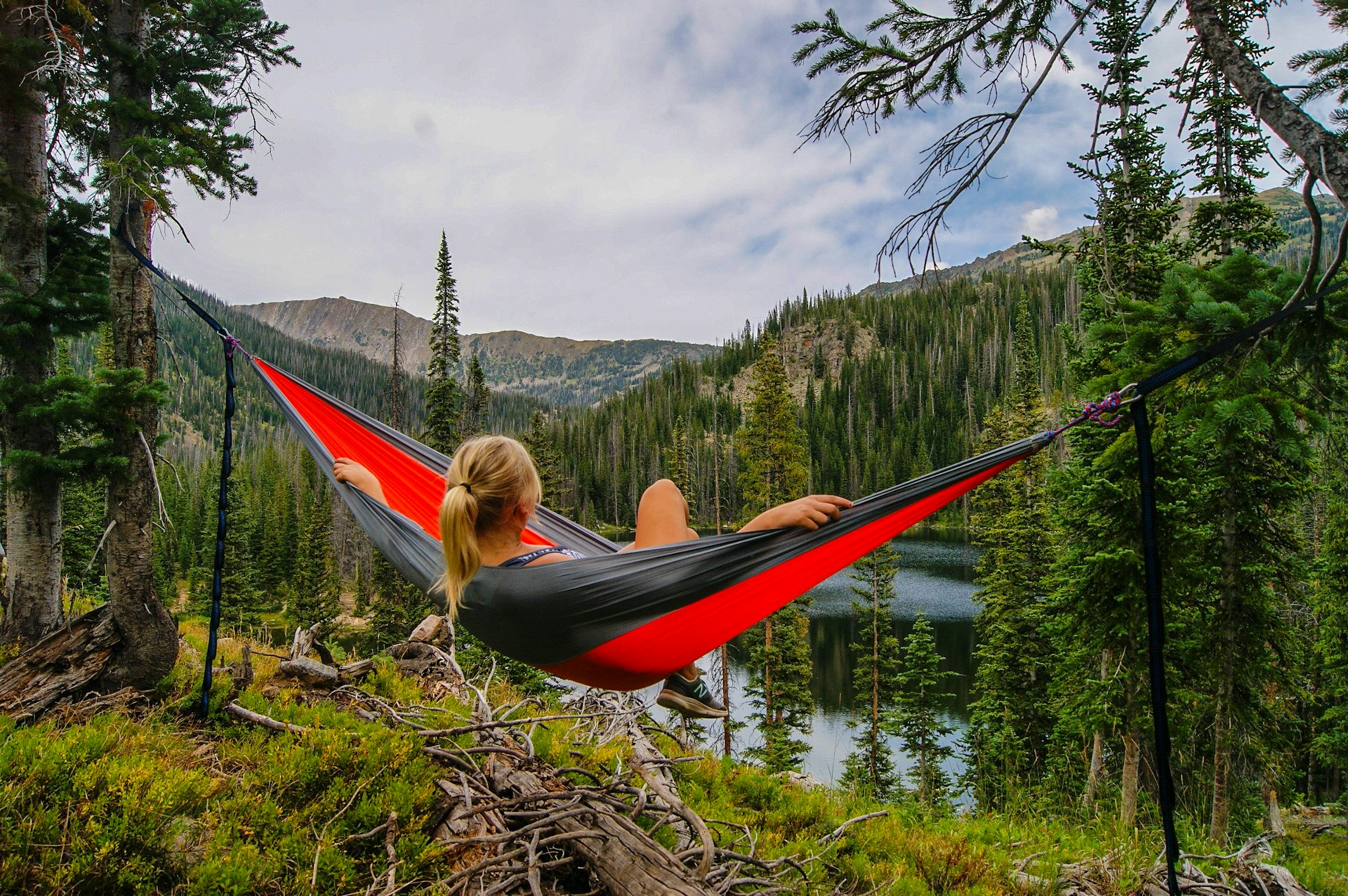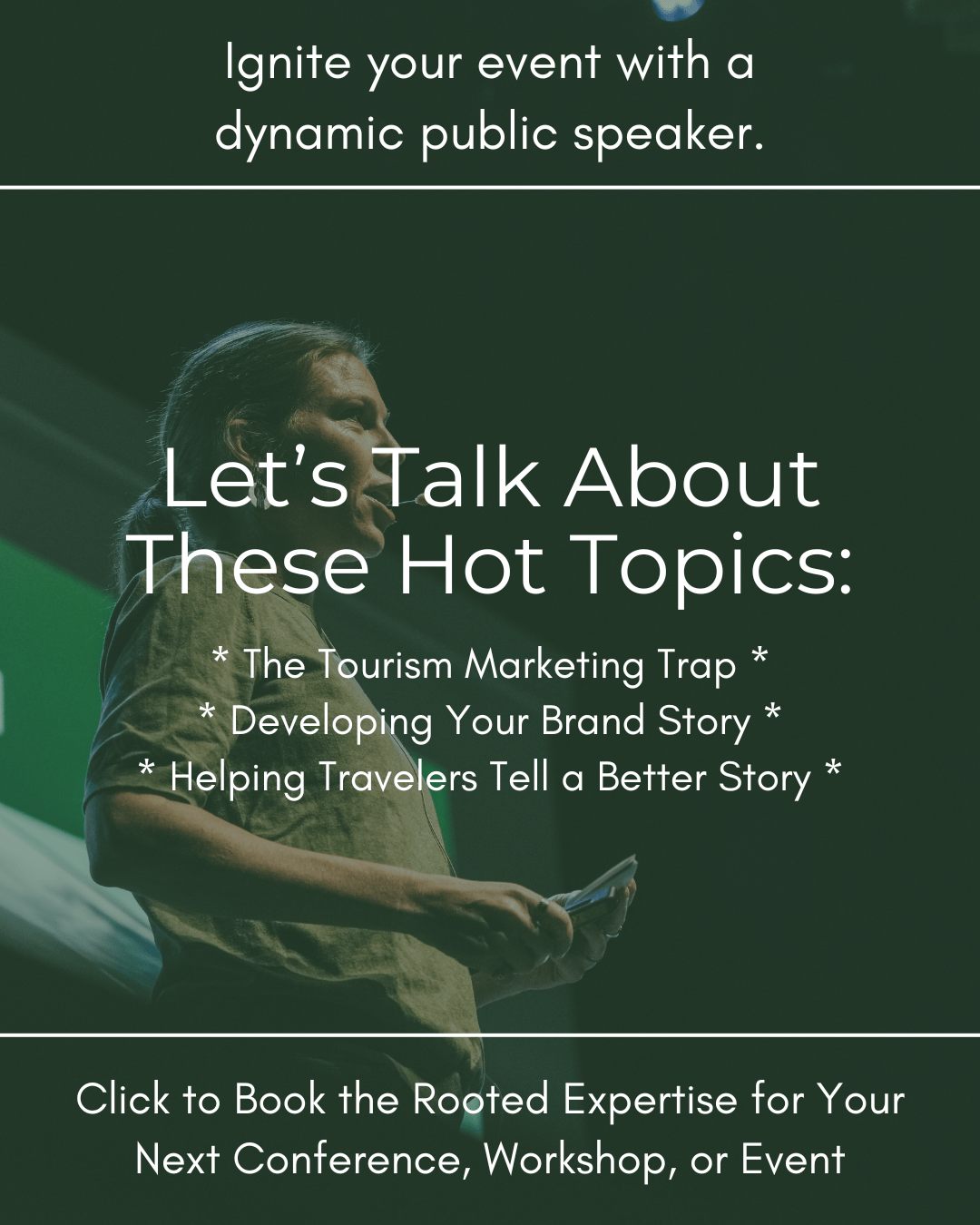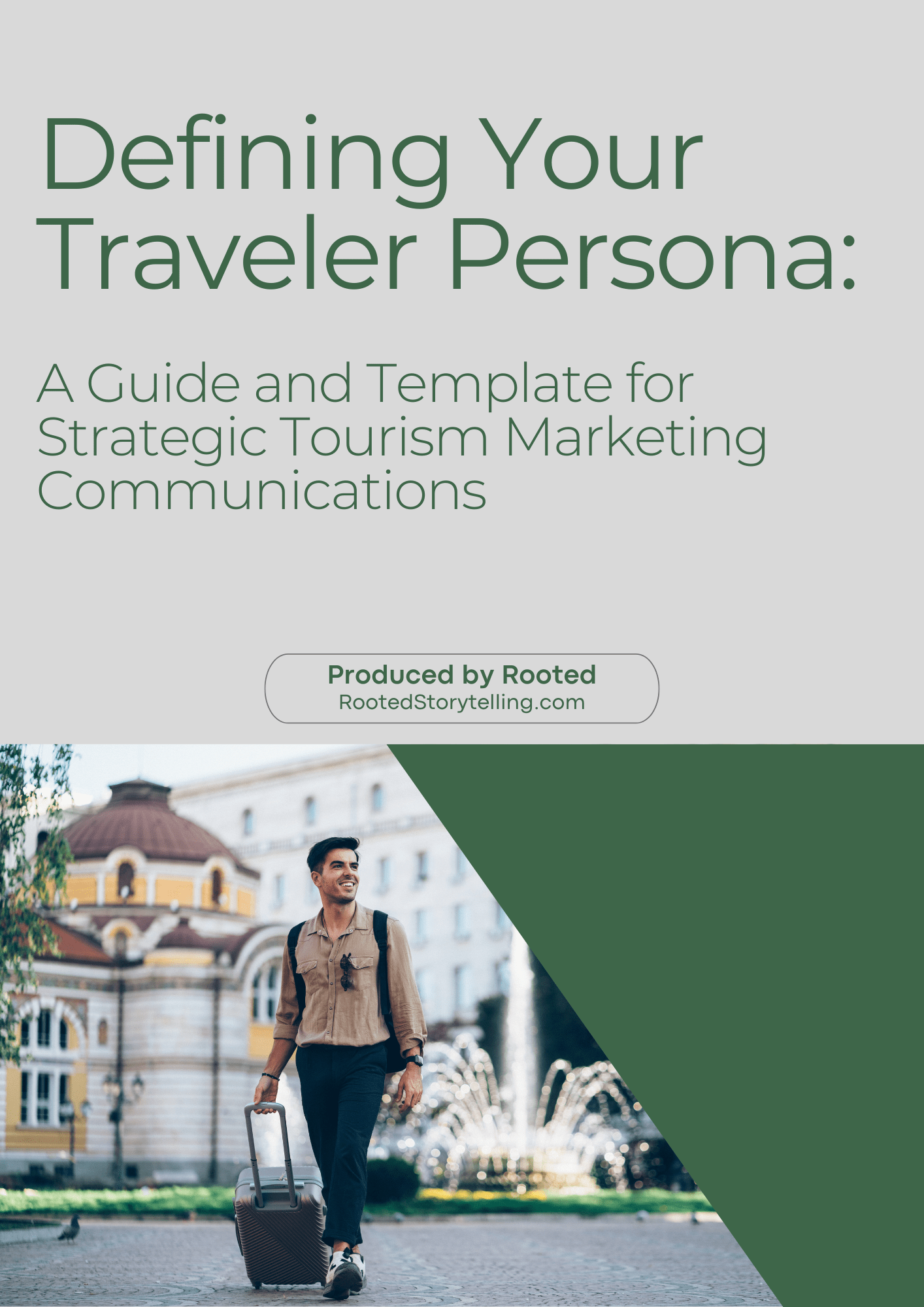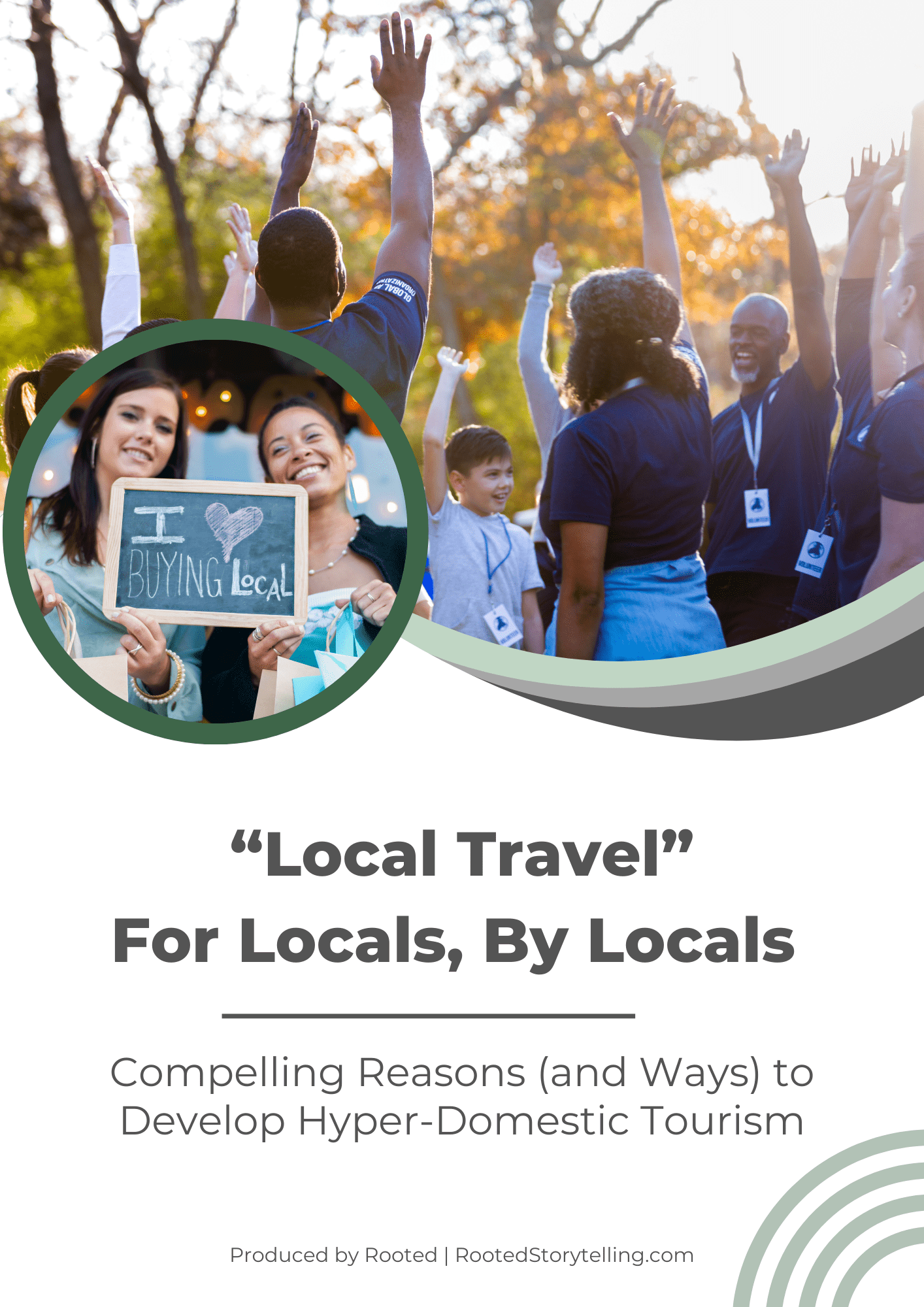In This Article:
Prior to the COVID-19 pandemic, the tourism industry contributed US$8.9 trillion to the world’s gross domestic product, and it was responsible for one out of ten jobs around the world. The number of travelers zipping across the world was accelerating so fast, it exceeded the UNWTO’s forecast for 2018.
At the time, dozens of destinations around the world were heaving under the weight of overtourism. The idea of simply “managing” these astronomical numbers as a reasonable solution to the problem was, quite frankly, laughable.
Entering the so-called “post-pandemic” era, many of these same destinations clearly signified a need to rethink tourism. In part, that meant being very intentional in the type of visitors they wanted to attract. Or, as this Bloomberg article coined it, they embraced “curated tourism.”
Today, tourism continues to grow at an accelerated rate, with no signs of slowing. Yet the negative implications of tourism are more obvious than ever — overcrowding, environmental degradation, excessive carbon emissions, leakage — so despite this growth, it’s become clear that not every experience provider or destination is eager to welcome every traveler.
There’s a reason for this: Not all travelers are created equal. They have a wide range of impacts on the places they visit — economically, socially, culturally, and environmentally.
Internationally owned all-inclusive resorts cause far more leakage than when people stay in locally owned accommodations and buy from locally owned businesses. Cruise ship passengers don’t financially contribute nearly as much as land-based travelers. People who pay for and visit museums have a much different mindset and intention than weekend partiers in town for the cheap drinks.
With this in mind, travel brands are doubling down on their efforts to find and attract their ideal travelers.
Who is the “Ideal Traveler?”
There’s no easy way to define the “ideal,” “right,” or “best” traveler or client. No singular set of characteristics define the perfect person for every travel brand because every brand is uniquely different. That’s because any given travel experience, tour, or place is also unique, which means the ideal traveler may be slightly different for all of them.
What is relevant, regardless of the company you work for or the destination you represent, is that any work you do to find and attract this defined persona should be aligned with your values and intentions. Increasingly, brands define this type of traveler as someone who is responsible, thoughtful, aware of their environmental and social footprint, and interested in leaving a positive impact (or at least not causing any harm).
This isn’t true for every sector, company, or destination, of course. But because more travel companies are seeking “sustainable travelers,” we’ll use that broad example throughout this article.
There is No Perfect: The Myth of the “Right Traveler”
When asked who you want booking your tours, staying at your accommodations, or visiting your destination, the immediate and enthusiastic response may be “anyone who travels.” This is common thinking for many people new to the tourism industry, but it’s not great for business. In an effort to cast a wide net, you may end up attracting the “wrong” traveler — or no one at all.
So, yes. You need to define the best client for your brand in detail. You must be clear on who you want to attract because it will impact everything from setting appropriate price points to establishing standards for providers across the supply chain.
Avoid Narrowly Defining the Perfect Client
You want to avoid being too vague in defining the perfect traveler for your brand. However, keep in mind that people don’t know what they don’t know, so it’s also important to avoid pigeon-holing your brand into such a narrow definition that it turns people who are potentially a good fit away. The exception to a highly focused or exclusive definition, of course, is if your brand truly is highly focused or exclusive.
For example, if your company offers scuba diving trips and clients must have certain certifications, it is important to define and communicate this to ensure the right people are attracted to and book the excursions. However, if your company offers snorkeling excursions, this might be a good fit for snorkelers as well as scuba divers, swimmers, and other people comfortable in the water.
Embracing “Normal” People as Ideal Travelers for Your Travel Brand
Generally speaking, values within the tourism industry include ideals such as the importance of protecting the environment, supporting local communities, creating awareness of and educating people about socio-cultural and environmental challenges, and being a force for good in a way that creates conditions for a sustainable and even regenerative future for the tourism ecosystem.
Though travelers may be arriving in a destination from all around the world, they hold similar core values with each other and with those in their travel destination. For example, generally speaking, people want to leave the world a better place for their children. They want to live in a safe and clean world. It is not a stretch to align these travelers’ values (“I want to leave the world a better place for my children”) with values aligned with the travel context (“it’s important to prioritize care for the environment”).
This is all to say that people might not be familiar with or think they care about concepts like sustainability. However, if you’re able to connect with them based on foundational shared values, you can build an entry ramp to “create” the client you seek.
The Tourism’ Industry’s Responsibility in Making Sustainability the Default Mode
While sustainable tourism may not be mainstream quite yet, the concept is gaining momentum. Many travel companies and destinations would define an ideal traveler as one who is mindful, intentional, and responsible. They are, therefore, inclined to find and attract this small sub-set of travelers who define themselves as such.
Yet, one of the greatest myths the tourism industry currently tells and sells itself is that, if it targets these travelers who say they are interested in sustainability, then “sustainable tourism” will finally become mainstream and normalized. However, we know the knowledge-action gap in tourism exists, even for those people who are aware of — and say they want to do something about — tourism’s negative impacts.
In other words, even the ideal traveler for sustainable travel brands is not so perfect after all. This is why it is so important for the tourism ecosystem as a whole to become more sustainable, accessible, and equitable as its default mode. Doing so will make it much easier for the “ideal” traveler to live up to (often impossibly high) standards, and for those who don’t naturally fall into that category to make their way in that direction.
Your Travel Brand and Its Positioning Problem
From the very first day travel companies come into being or places decide to market themselves as vacation destinations, a story is being developed. A lot of work goes into defining and shaping a travel brand. Ultimately, you need eyes on your brand and people willing to spend money on it. Ineffectively sharing your travel brand story with the world rarely leads to success.
It is not uncommon for business owners to say they can’t find their ideal clients. They say they’re not succeeding because they aren’t connecting with the right people. However, the key problem may not be finding the right people but rather attracting the right people. This is a positioning problem.
It is essential to put in the work to clearly define who you are, what you do, and what you offer. Then, there must be alignment with your branding, positioning, and messaging. Misalignment of these three things means you are missing the mark somewhere and somehow in communicating your brand story in the right places to the right people in the right way.
Why the Marketing and Communication of Your Travel Brand Might Not Be Finding and Aligning With the Right Traveler (and What to Do Instead)
Getting clear on your company’s or destination’s positioning — and aligning your business operations and offerings — is a good first step in finding and attracting the right client. However, intentional and mindful messaging matters too.
Keep these tips top of mind the next time you’re creating and delivering content to ensure it helps — and doesn’t hinder — your efforts in attracting the ideal traveler.
Problem: You aren’t “speaking” to your ideal client.
Part of defining the person you mean to attract means understanding how to “speak” to them. This includes everything from the words and images you choose to the actual language of your marketing materials.
This is, at its root, a positioning problem. You simply won’t connect with people if you’re not attracting or aligned with them.
Do this instead: Think about your ideal traveler’s voice and vibe.
The language, imagery, messaging, and delivery of your content should both align with your brand and appeal to the people you want to attract. Think about the words, messages, and narratives that best convey the experiences you offer and how those might resonate with potential travelers. Message packaging, including imagery choices, colors, and design, also communicate what people can expect from your company.
If these both accurately represent your brand and align with someone researching their next holiday, you have a match.
Problem: You focus on sustainability to the detriment of your offering.
This is a fundamental problem that “sustainable” travel brands tend to have: They are doing great work on the sustainability front and want to share everything with everyone. In doing so, they center sustainability over their core offerings and overuse jargon in an attempt to impress.
Unfortunately, except for a small slice of the population, that’s not what people are looking for when researching and booking travel. At the very least, it’s often not the first or only thing they are seeking.
Do this instead: Focus on the travel experience and/or uniqueness of the place.
If sustainability is built into the core of your business, then communicating about your offerings naturally shares that sustainability story. Communicate about what travelers can expect to do, see, experience, and feel when they travel with your company or visit your destination.
For example, let people know about the flavorful meals people can expect to eat rather than on your waste management program. And, turn your camera on the snow-capped mountainscape rather than reinforcing the footprint of the train that lets travelers see it.
Problem: When you speak to “every person,” you say nothing at all.
The tourism industry loves using flowery language and generic imagery: Consider those “sun-drenched beaches,” “stunning waterfalls,” and “mouth-watering dishes.”
The problem is using generic, cookie-cutter language and imagery will attract generic, cookie-cutter travelers. We see this play out when destinations become backdrops without context on social media platforms, and travelers seeking to replicate those shots fail to live up to expectations set for more responsible visitors.
Do this instead: Be specific and provide context.
It’s time to brush off your storytelling skills and provide a true picture of what people can expect to encounter when they travel with your company or visit your destination. Show real people doing real things. Use the five senses to describe places and spaces. Provide appropriate context.
This may not always appeal to everyone, but “everyone” isn’t your client. It is far better to set appropriate expectations for a win-win holiday to unfold.
Problem: You focus on yourself.
For companies that have put in sustainability and climate-focused efforts, it makes sense that this is part of the story you want to share with the world. And, yes, you absolutely should be proud of this.
However, while travelers might be looking for certain values and features in a destination, tour operator, or service provider, what they really care about is what is in it for them. Sustainability initiatives, for example, are important, but travelers aren’t overly concerned by your climate action plan. As tempting as it may be to lead with your B Corp status and the fact you are an award-winning operator, just say no.
Do this instead: Focus on the traveler, and make them the hero of the story.
This can be a double-edged sword, because there is a need to move away from traveler-centric narratives in tourism. However, the trick here is to think about how to translate what you offer into what travelers are looking for and emphasize the benefits for them: adventure, relaxation, luxury, immersion, escape, etc.
For example: Think about how you position that opportunity where guests can help pluck vegetables from the accommodation garden. Yes, it’s part of your local food initiative, but it’s also an immersive hands-on activity.
Problem: You aren’t where your ideal clients are.
We work in a loud world, and the people you want to attract are living in an equally chaotic space. There are so many places to be and far too much communication to take in. This is why the placement of your messaging matters and you need to show up in the spaces your ideal clients inhabit. Too many service providers (especially those running small businesses) spread themselves too thinly and fail to show up fully in any place at all.
Do this instead: Invest time and energy in the places where your ideal clients hang out.
As you define the best travelers for your brand, put yourself in their place. Think about how they want to receive communication. What kind of content do they like and engage with? What social platforms are they on?
In other words, if you intend to attract mature adults looking for luxury experiences, don’t double down on your TikTok strategy.
Problem: There is a misalignment of values, attraction, and action.
The content you put out into the world is the content that people consume, so ensure the stories you share match your intentions. Similarly, there is sometimes a disconnection between the values you emphasize and the way guests actually interact with an attraction or experience.
When there is a misalignment, you might attract the right people initially because you have strong messaging aligned with the brand you want to be. However, if your brand doesn’t follow through from the buyer journey into the traveler journey, you might have made the sale but you didn’t create a brand ambassador.
Do this instead: Be mindful of the entire customer and traveler journey when seeking the best clients for your travel brand.
It is easy for a travel company or destination to communicate about what they intend to be and deliver. It can be a lot harder to follow through on that promise, especially if you’re working with a wide net of suppliers that may not be fully aligned with your values, sustainability efforts, or messaging. However, it really is important to be mindful of the entire customer and traveler journey. Ensure that what is communicated on the front end to attract the “right” traveler is followed through on the ground.
When you’re able to deliver the experience perfectly aligned with what your ideal client was expecting, this is when you create repeat customers and word-of-mouth brand ambassadors emerge.
Are you ready to take action?
Start with these resources.







